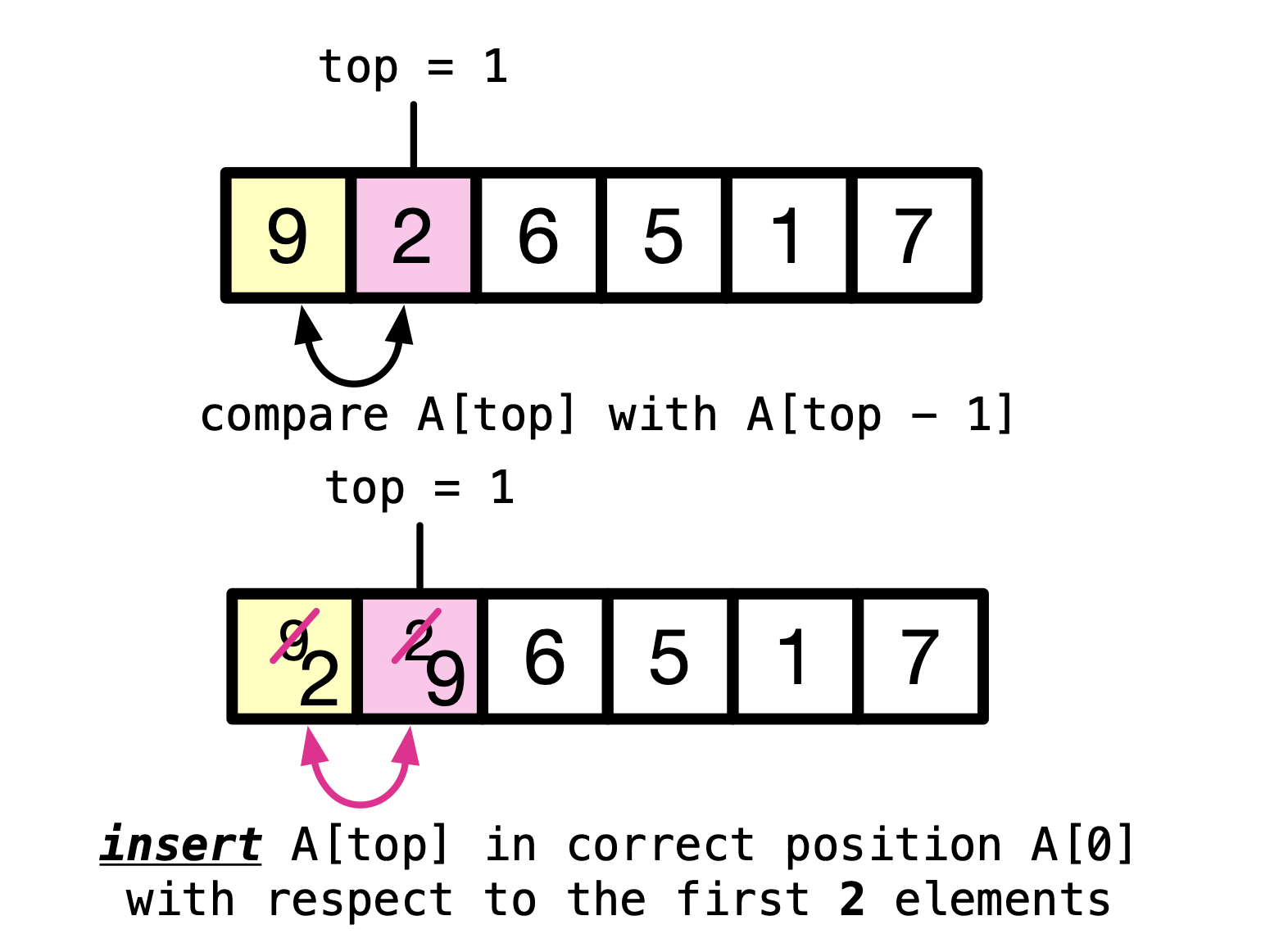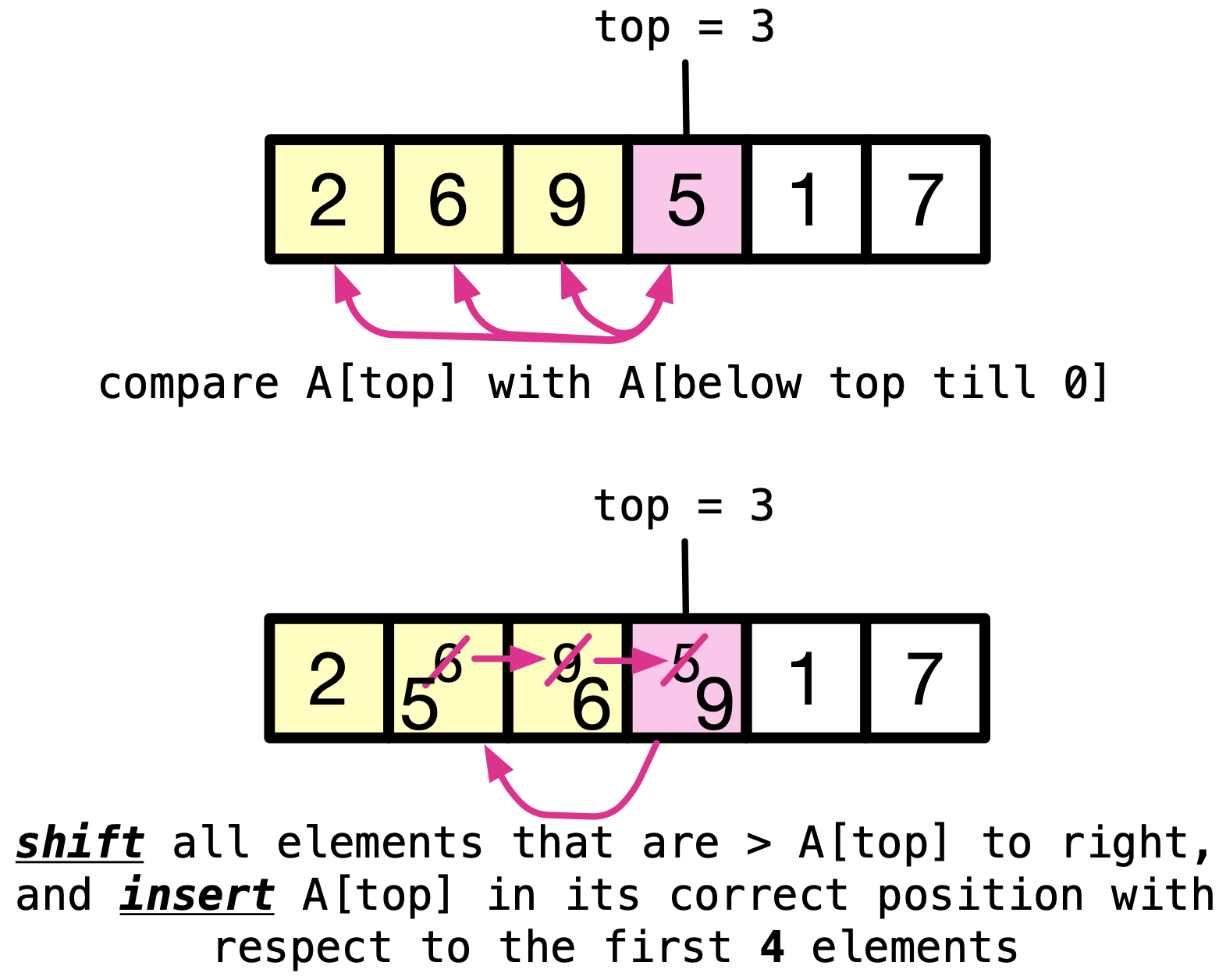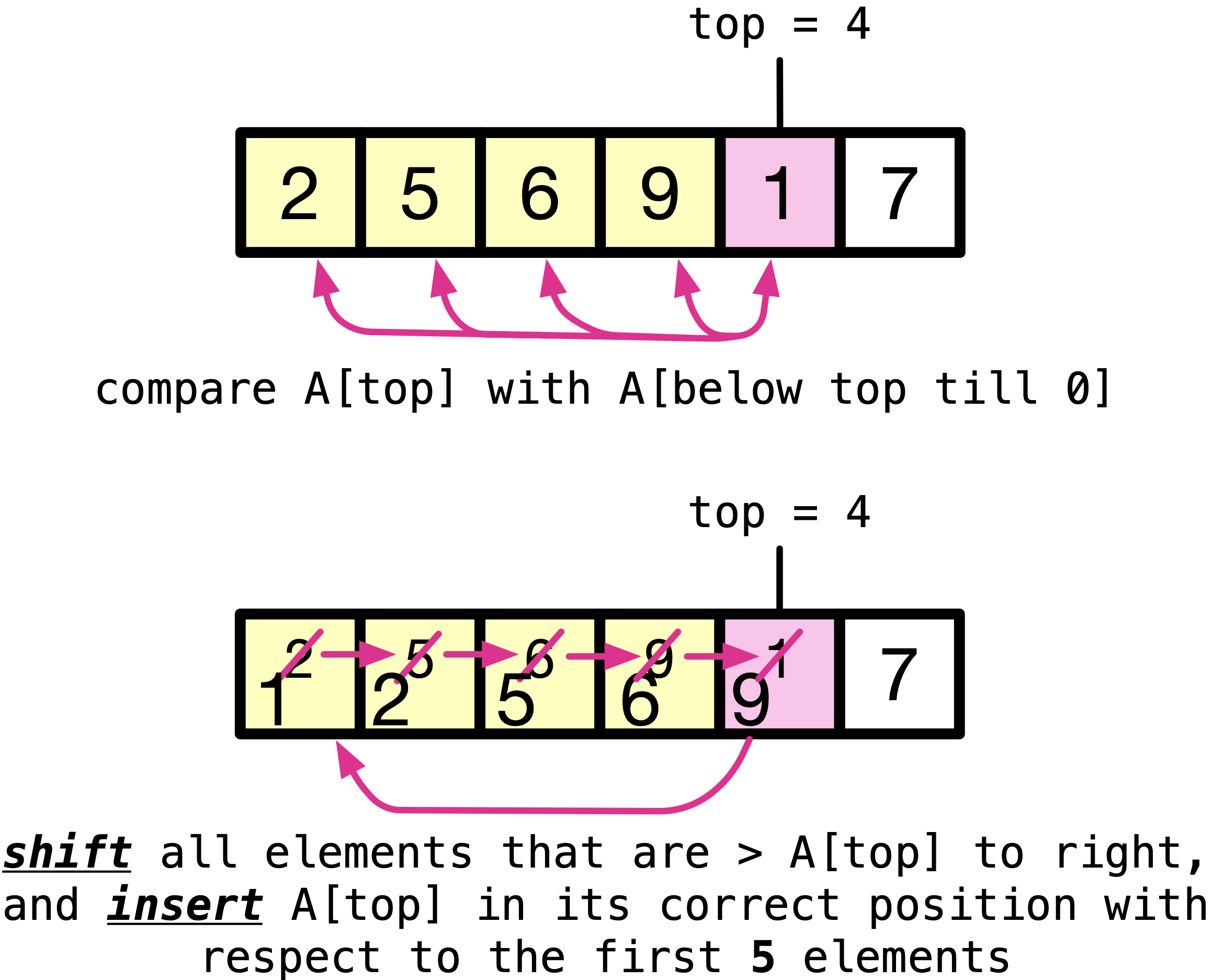Insertion Sort
Contents
14.1. Insertion Sort#
The first sorting algorithm we discuss is insertion sort. Insertion sort is a simple sorting algorithm that builds the final sorted array (or list) one item at a time. It is much less efficient on large lists than more advanced algorithms such as quicksort. However, it is an excellent algorithm for learning about sorting and is often used to sort small lists or arrays.
14.1.1. Algorithm#
The general idea of insertion sort is to iterate through the array, and insert each element into its correct position with respect to the elements that have already been sorted. For example if only the first 3 elements of the array are sorted, the fourth element will be inserted into its correct position with respect to the first 4 elements. This happens by shifting all elements that are greater than the forth element to the right, and inserting A[top] in place of the left most element greater than forth element. This places the forth element in its correct position with respect to the first four elements.
Given the following example array named int A[] = {9, 2, 6, 5, 1, 7};

Insertion sort works as follows:
Insert the second element into it’s correct position, with respect to the first two elements.

After the first iteration, the first two elements — as a sub-array — are sorted.
Insert the third element into it’s correct position, with respect to the first three elements.

After the second iteration, the first three elements — as a sub-array — are sorted.
Insert the fourth element into it’s correct position, with respect to the first four elements. This happens by shifting all elements that are greater than
A[top]to the right, and insertA[top]in its correct position with respect to the first 4 elements.
After the third iteration, the first four elements — as a sub-array — are sorted.
Insert the fifth element into it’s correct position, with respect to the first five elements by shifting all elements that are greater than
A[top]to the right, and insertingA[top]in place of the left most element greater thanA[top]. This placesA[top]in its correct position with respect to the first 5 elements.
After the fourth iteration, the first five elements — as a sub-array — are sorted.
Do the same as step 4, but with the sixth element.

After the fifth iteration, the first six elements — as a sub-array — are sorted.
To implement insertion sort, we need to keep track of the index of the element that is currently being inserted into its correct position. This index is called top. We also need to keep track of the index of the element that is currently being compared to A[top]. This index is called ind. We also need to keep track of the value of A[top] so that we can insert it into its correct position. This value is called item.
14.1.2. Pseudocode#
We write pseudocode for insertion sort as follows:
Set
topto1,Set
itemtoA[top], andindtotop.If
itemis smaller thanA[ind - 1], then setA[ind]toA[ind - 1]and decrementind.Repeat 3 until
indis0or whenitemis no longer smaller thanA[ind - 1]. This shifts all elements that are greater thanitemto the right.Now, chose the correct position for
itemby settingA[ind]toitem.In the next iteration, set
toptotop + 1, setitemtoA[top], andindtotop.Repeat 3-6 until
topis equal tolistLength.
14.1.3. Implementation#
The following code snippet shows the insertion sort function.
Code
#include <stdio.h> void printArray(int list[], int listLength) { for (int i = 0; i < listLength; i++) { printf("%d ", list[i]); } printf("\n"); }
void insertionSort(int A[], int listLength) { int top;
for (top = 1; top < listLength; top++) { int item = A[top]; int ind = top;
while (ind > 0 && item < A[ind - 1]) { // shift all elements > item to the right A[ind] = A[ind - 1]; ind--; }
A[ind] = item; printf("After iteration %d: ", top); printArray(A, listLength); } }
int main(void) { int list[] = {9, 2, 6, 5, 1, 7};
insertionSort(list, 6); printArray(list, 6);
return 0; }
Quiz
0 Questions
